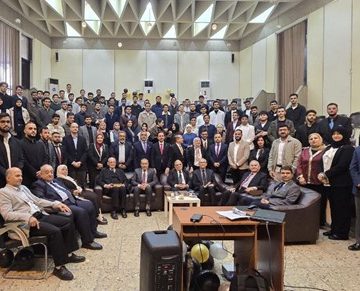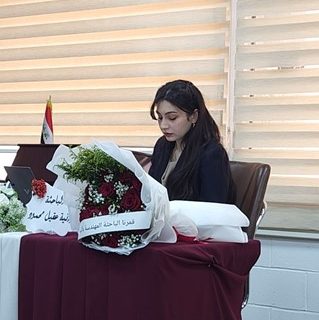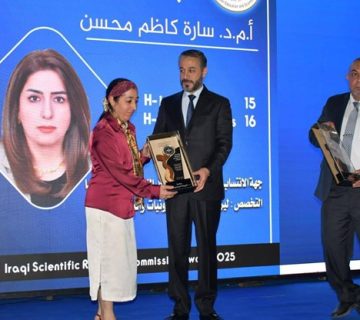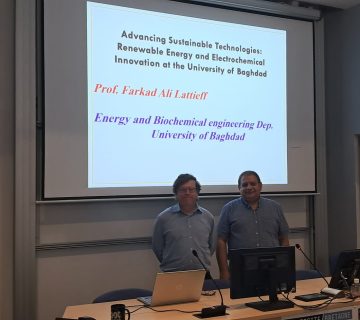The doctorate’s thesis by the student (Rana Mohammed Ameen Al-Khadaar) was discussed in the Department of Civil Engineering on the research entitled (Seismic Behavior of Partially Connected Piled- Raft Foundation in Sandy Soils) on Sunday, 12-5-2024, under the supervision of Prof. Dr. Mahmood D. Ahmed.
The discussion committee was formed of:
- Prof. Dr. Bushra S. Albusoda University of Baghdad/College of Engineering (Chairman)
- Prof. Dr. A′amal A. H. Al-Saidi University of Baghdad/College of Engineering (Member)
- Prof. Dr. Qassun S. Mohammed Shafiqu University of Nahrain/College of Engineering (Member)
- Ass. Prof. Dr. Salah R. Al-Zaidee University of Baghdad/College of Engineering (Member)
- Ass. Prof. Zuhair K. Jahanger University of Baghdad/College of Engineering (Member)
- Prof. Dr. Mahmood D. Ahmed University of Baghdad/College of Engineering (Supervisor)
Abstract
Improvement by grouting is used to strengthen soil formation, permanently or temporarily during constraction to increase strength and load carrying capacity . In the last ten years, the use of jet grouting technique began in the southern part of Iraq. In this research, soil from AL-Rashdiya site, northeast of Baghdad was used.
A single-jet grouting machine was manufactured and used in the laboratory to work as a double jet grouting one. The study involved laboratory tests of single jet grouting columns that were grouted in the laboratory by using a manufactured steel box whose dimensions are 2.12.10.8 m, and double jet columns with a cap grouted in the box. After curing for both the jet grouting column and the bored pile in the steel mold, a load was applied by using a mechanical jack. Load-settlement curves were developed to find the bearing load and corresponding settlement. Following a similar procedure, concrete piles were installed in the soil by using a steel plate to catch the pile through the process of raining into the soil as bored piles and the load-settlement curves were developed. ABAQUS software was used to conduct numerical analysis and find bearing loads, settlements, and stresses at the interaction line between soil and pile for different length-diameter ratios.
It was found that the increase in bearing load for jet pile is12% more than that with a concrete pile of the same dimensions, and the settlement decreased by 99% when compared with that with a concrete pile. As the length-diameter ratio (15, 25,30) increased the settlement decreased and the stress increased as the length-diameter ratio decreased.
Also, a group of cap piles of (21) were tested in the laboratory, once as jet pile and the other as concrete pile. The results from laboratory tests were compared with those obtained from a numerical analysis. Length-diameter ratios of 15, 25, and 30 were used in the numerical analysis conducted by using ABAQUS software in order to find the bearing load and corresponding settlement. The bearing load increased by 73.6% in comparison with a concrete pile cap and the settlement was reduced by 96.2% when compared with the cap of a concrete pile. Along the pile length for different length-diameter ratios, the settlement decreased and the value of stress increased by a small amount.
Moreover, the behaviour of a group of (22) piles were numerically investigated by using ABAQUS software. It was found that the bearing load for a group of jet pile caps increased by about 43% when compared with the same group of concrete pile caps. The reduction in settlement was about 36% when compared with a group of concrete pile caps. When using different length-diameter ratios, a value of 25 was the most appropriate which gave an increase in bearing load of about 30% and a reduction in settlement about 34%. From all percentages, the settlement decreased because the jet grouting column’s ability of bearing load is more than concrete pile column due to the double grouting technique, which reduced the settlement.








